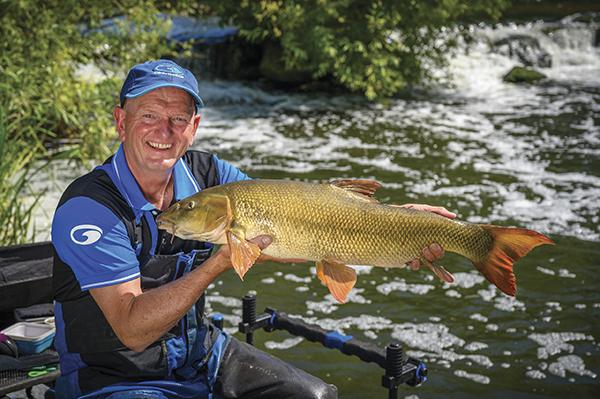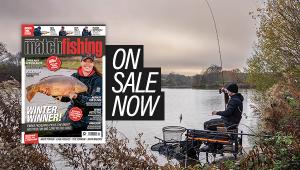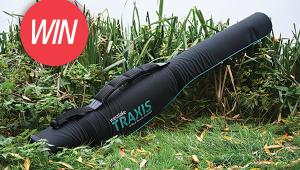I Predict A Riot!

Summer river fishing can be very difficult at times; with stifling conditions and very low clear water levels, it’s not always as inviting as it can look. The fliers will often look after themselves, but there are times when, with a little bit of thought and preparation, you can be ready for the conditions you are faced with. It is never easy when approaching a very low summer river; it is almost inevitable that the fish won’t be that bothered about feeding all day, and with such bright conditions they will most certainly be out of the way, sulking. However, there are a number of ways in which you can give yourself a chance of catching one or two of those ‘game changing’ bonus fish from many swims.
Mapping out your swim is so important. The days where we’d turn up with a couple of float rods and a feeder rod are long gone, there are so many more ways to catch river fish now. By planning exactly where in your swim you feel you can catch fish, it will help you decide exactly what tactics to use where. The pole is a fantastic way to catch bonus fish for many reasons. People sometimes steer away from it as they worry about losing big fish. In fact, it can have the exact opposite effect. Guiding big fish away from snags and obstacles can be much easier with a 13m-plus pole and the correct ‘riot gear’ rigs and elastic rather than a 3.9m rod! There are also many other reasons why the pole is the best way to target bonus fish.
Pinpoint Accuracy
The major benefit of using a pole is that you can fish and feed in exactly the same spot. This can be very hard to do with a rod and line, even with line clips. The pole will help you reach spots where you cannot cast, under trees or tight to snags. It helps you to plumb up and find the contours on the bottom much more easily. Today I spent 15 minutes mapping out the bottom in my swim. I am directly below the weir at Seven Meadows in Stratford-upon-Avon, and the bottom is all over the place with deep holes, boulders in the swim and snags everywhere.
I have managed to find a deep hole seven sections out with nine feet of water and a very clear gravel bottom. It shallows up very quickly to the right and goes deeper to the left so I only have a short swim to fish, but it is where I would expect the fish to be sat, especially barbel and chub. With a 3g round bodied and 4g flat float I can control my rig perfectly in this area.
Before I finalised where I was to fish, I tested my rigs here. The flow varied a lot, but I was able to present the rigs very well. I also used a large baitdropper to keep my bait in a very tight area. This really increases your chances of catching more fish as you can identify exactly where you need to be focusing all your attention. Get the presentation right in this area and you will catch the fish over the feed. Again, a pole makes it much easier to slow your hook bait right down over this area. A feeder or straight lead rig largely means a static bait, and you cannot guarantee you are in a snag free area around your feed. It is absolutely critical to be on your feed, as always. When I used to fish in Europe with England on some rivers with very heavy flows, we used flat floats up to 50g and it was so noticeable how you needed to be right on top of your feed to catch properly.
Another very important point is the amount of feed you need to put in. When you catch a big fish, you need to be sure there is enough bait in the swim to catch more. They don’t usually swim alone whatever the species, but hooking a big fish is likely to spook others away for some time. The next thing I will do as soon as I have caught one is re-feed, then I know there is still enough bait there to hold others, so if they come back they should stay long enough to catch another. Then you rebuild the swim again, repeating the process as often as you need to. The good thing about being so accurate with the pole is that you can target different species or shoals of fish in different areas of your peg, also with different baits. This opens your peg up to a lot more options.
A good example is when targeting perch. Often perch will stay very close to cover, such as weed or snags. You can often set up two or three swims if you have different areas of cover. You are then catching different shoals of fish, meaning you can rotate swims, catch for longer, and normally end up with more fish in the net. Always look for points of cover, which can be above or below the water line. Careful plumbing up in likely areas should identify any snags, deeper holes, weed etc. This helps form a picture of the contours of the bottom and guides you as to where you should be fishing.
Get Geared Up!
It really helps if you know the venues you are fishing and what you are likely to catch. On most venues you are likely to need several rigs to catch different species or sizes of the same species. Size of fish will dictate the strength of the rig, but it is always better to make the rigs up on the heavier side as you can always use a lighter hooklength. This makes the rigs a lot more durable, which can be important, especially on heavier rigs due to depth and more flow.
With powerful flows, heavier rigs and barbel in mind, all my rigs are set up on 0.23mm Garbo line and Fluoropower hooklengths in 0.18mm to 0.23mm tied to Garbolino Hair Rig X Power or Guru MWG Barbed hooks in sizes 12 to 16 depending on what hook baits you intend to use. Garbolino Fighter Hi Stretch 2.8mm elastic has enough initial stretch on the strike yet powers up quickly to get the fish under control. You also need to ensure that your pole is up to the job. I use the UK4 for this as I know I can put as much pressure on the pole as I need. Also, when fishing with flat floats when I need to put the tip under the water for perfect static presentation, I can also strike hard without worrying about the pole as the tip of the pole usually fills with water when fishing like this.
I usually like to set up flat float rigs for holding still in the rest, or easing through very slowly, as well as round bodied versions for fishing at the pace of the river, or a little slower. This gives all the variations of presentation I will need during the match. When and how you use them is down to trial and error on the day. Today I started on my 3g round bodied rig and caught perch straightaway. I also caught my first barbel on it, so immediately fed again and changed to my 4g ‘flattie’, which I could hold perfectly still over the area where I caught the barbel. This worked perfectly.
‘Fish Specific’ Baits
Today my target fish are perch, barbel and maybe an odd chub. Weir pools can hold some real surprises, so be ready for everything, even bream and the odd carp can be caught here. This makes things easy in terms of bait, and a combination of chopped dendrabaenas, casters, dead maggots and hemp will cover everything, and not offend any fish. If small fish were a nuisance, I might have also put a few halibut pellets in, which would have helped be even more selective. With this mixture of feed, I can then fish different permutations on the hook. The most obvious starting bait for me is worms, and I start on a big piece of dendra or lobworm tail on the ‘riot gear’. I’d rather go lighter later than hook that one big bonus and lose it! Double and treble caster, and bunches of maggots are also very good.
Today the worm did the trick, and with the deeper, darker moving water I could also get away with heavier gear and I am so glad I did as I would not have landed all the barbel I hooked today. They gave a fantastic account of themselves but I always felt in control. Today has been a red-letter day with plenty of perch, a 3lb chub and five wonderful barbel with an 11lb 8oz beast stealing the show! In match conditions one fish half that size is an absolute game changer but one thing is for sure, if you don’t set a trap with the right bait, and the gear to get them out, your chances of hooking and landing one are absolutely minimal. Don’t miss out, be prepared, set up those extra swims and kits, and now and again, but not every time, you will reap the rewards for that little bit more effort.
This approach is so important on river venues these days and the perfect illustration is the recent RiverFest qualifier on the River Trent at Newark. James Robbins drew a flier on Peg 1 and destroyed the match with 110lb of barbel! On August 1st there is a qualifier on the same stretch of river I’ve been on today and if the right angler is on the right peg, those big fish will play a huge part. Seven Meadows is a great length just downstream of Stratford-upon-Avon. It an extremely varied length with lots of different methods working. If you fancy a day out, then tickets are available at Stratford On Avon Fishing and Outdoors Ltd or Baileys of Warwick.
- Log in or register to post comments













